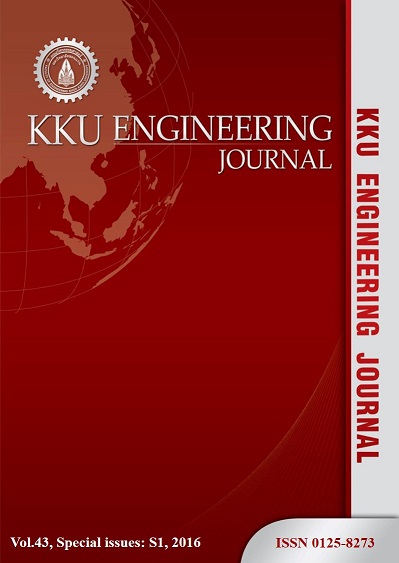Effect of engine speeds and duty cycle percentages of fuel injection on actual fuel injection rate
Main Article Content
Abstract
This research has been conducted to study the effect of engine speeds and effect of duty cycle of fuel injection on actual fuel injection rate. The 600 cc/min, 2011 Mitsubishi Triton fuel injector was used to be considered and a function generator was used to create a signal to control the fuel injector. After that, the weight of fuel injected in a specified time was measured by digital balance. Then, it was converted to fuel injection rate at the engine speed of 1,000 2,000 3,000 4,000, and 5,000 rpm, at the percentage of the duty cycle equaled to 10.5, 15, 20, 25, 30, 35, 40, 45, 50, 60, 70, and 80 of total time period between adjacent injection. The pressure differences between the fuel pressure and the ambient pressure of 3.5, 4.0, 4.5, and 5.0 bar were studied. The results from experiment showed that, the fuel injection rate increased when the engine speed and percentage of duty cycle increased. However, the fuel injection rate had discrepancy from the ideal rate that significantly depended on the engine speed and percentage of the duty cycle.
Article Details
How to Cite
Boonjun, J., & Kammuang-lue, N. (2016). Effect of engine speeds and duty cycle percentages of fuel injection on actual fuel injection rate. Engineering and Applied Science Research, 43, 87–91. retrieved from https://ph01.tci-thaijo.org/index.php/easr/article/view/69701
Section
ORIGINAL RESEARCH
This work is licensed under a Creative Commons Attribution-NonCommercial-NoDerivatives 4.0 International License.



